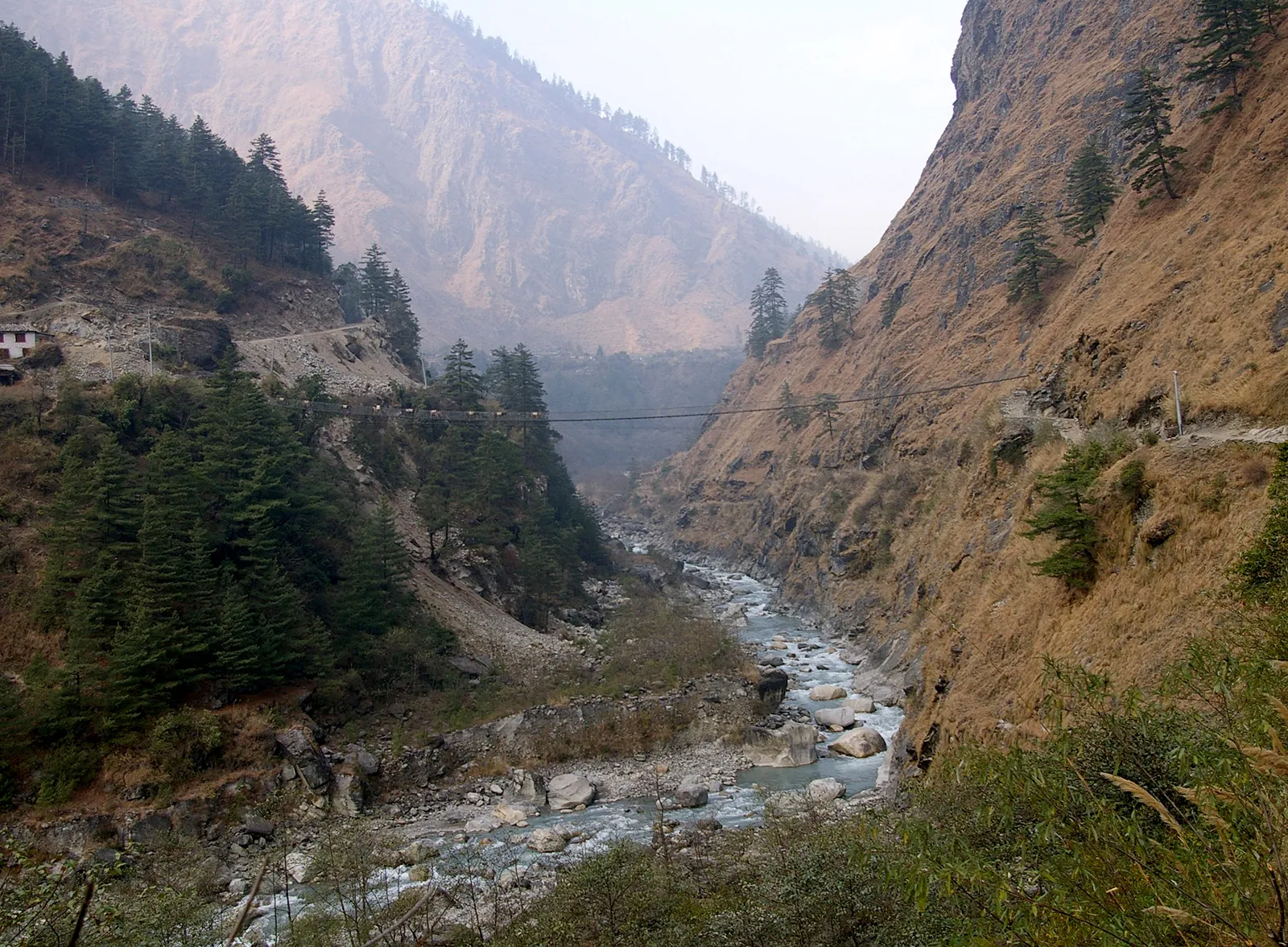River Gandak

Religious Significance
The puranas describe river Gandak as a sacred stream. Legends have that the river is actually the body of Vrinda Devi (one of the incarnations of Goddess Lakshmi), daughter of a demon named Nemi and the faithful wife of Jalandhar. Jalandhar became invincible in the three worlds, mainly because of a boon from Lord Bramha – he would be free from death till his wife Vrinda was a chaste. As a last resort to kill Jalandhar, Lord Vishnu cheated on Vrinda by assuming Jalandhar’s form. Vrinda in her wrath cursed and turned the Lord into a black stone or Saligrama. Lord Vishnu too retaliated and turned Vrinda’s body into Gandak river and her hair into the sacred Tulsi plant. Thus, origin of the ammonite black stone or Saligrama found on the bed of the river Gandak may be attributed to their legend.
The sacred Saligrama stones (black ammonite stone), are found only on the bed of river Gandak near Muktinath, Nepal. These naturally formed stones are used by devout Hindus to worship Lord Vishnu.
Ecological Significance
The Gandak river basin in Bihar has a series of ox-bow lakes due to the frequent meandering of the river. These lakes support great aquatic biodiversity.



Place of Origin: Great Himalayan Ranges, Nepal
Length: 765 km
Confluence: River Ganga, Patna (Bihar)